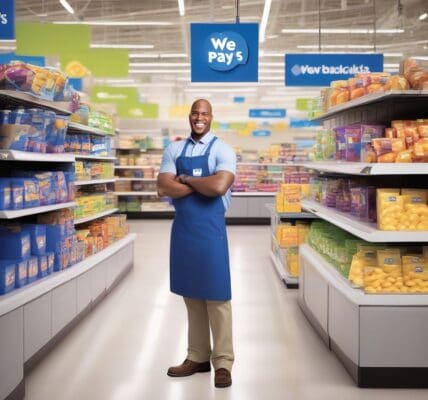As we transition into the fall season, which also marks a pivotal political landscape, consumers are navigating the complexities of grocery inflation with adaptive strategies. A recent report titled “U.S. Grocery Shopper Trends: Return to Routine,” conducted by FMI – The Food Industry Association and The Hartman Group, highlights key insights into consumer behavior during this period.
Despite ongoing discussions around food inflation, shoppers are adapting their routines to manage budgets while still maintaining a positive outlook on the shopping experience. For the past 18 months, average weekly household grocery spending has stabilized at approximately $163. Notably, 83% of consumers feel they have some control over their grocery expenditures. This sense of control is crucial, especially for 63% of shoppers actively seeking deals as a means of navigating rising costs.
Shoppers are modifying their purchasing behaviors, opting for fewer items at the store, increasing their purchases of frozen meats and seafood, choosing fewer organic products, buying in bulk, and selecting more store brands. These shifts are strategic responses to inflationary pressures, demonstrating a conscious effort to make every dollar count. The adaptability of consumers reflects practical decision-making in challenging economic conditions.
During a recent webinar that discussed the survey findings, Dr. Ricky Volpe, an associate professor of agribusiness at California Polytechnic State University, provided valuable context regarding inflation. He acknowledged that while food inflation has moderated, it is unlikely that prices will revert to historical lows. Dr. Volpe emphasized the importance of understanding the distinction between nominal price cuts and real-term value for consumers. “Aggregated price levels almost never go down,” he stated. While many retailers might promise reduced prices, underlying costs such as trucking and wages continue to exert pressure on the pricing structure.
Moreover, the notion of food inflation has become a contentious topic. Consumers often feel the pinch, yet they are simultaneously experiencing relief in their grocery spending, as their earnings afford them more purchasing power despite inflated prices. This paradox illustrates the complex relationship consumers have with food pricing, as their actual spending power may not fully correlate with sticker prices at the register.
Amid the discourse around inflation, political figures such as Vice President Kamala Harris have drawn attention to accusations of price gouging. During a recent webcast, industry leaders expressed frustration over this characterization. “Conflating price gouging with price increases during an inflationary period is, in our opinion, irresponsible and inaccurate,” stated Andy Harig, VP of tax, trade, sustainability, and policy development at FMI. Current data indicates that the profit margin for food retailers was just 1.6% for 2023, suggesting that the notion of excessive retailer profits benefiting from inflation does not hold true.
Interestingly, consumer sentiment towards grocery retailers remains notably positive. Despite the backdrop of inflation, shoppers rate their primary store an impressive 8.0 out of 10 for meeting their needs. FMI’s additional research reveals that grocery shopper sentiment rests at a commendable 70 out of 100, with more than half of respondents expressing favorable feelings towards grocery shopping overall. This level of trust is significant, especially considering the decline in trust towards other institutions during the same period. Uniquely, 90% of shoppers believe that grocers reliably provide safe food options.
Understanding consumer perception of value is critical in navigating these challenging waters. According to Harig, the grocery industry must remain attuned to the unique difficulties shoppers face while also recognizing that purchasing food at home is one of the more economical choices available for families.
In summary, as consumers manage their grocery expenditures amidst inflation, they demonstrate resilience and adaptability. Their trust in food retailers remains high, indicating that the grocery sector holds a unique position in a world of fluctuating consumer confidence. The relationship between price, consumer behavior, and retailer response is intricate, yet it paints a picture of a market responsive to both economic pressures and consumer needs.












